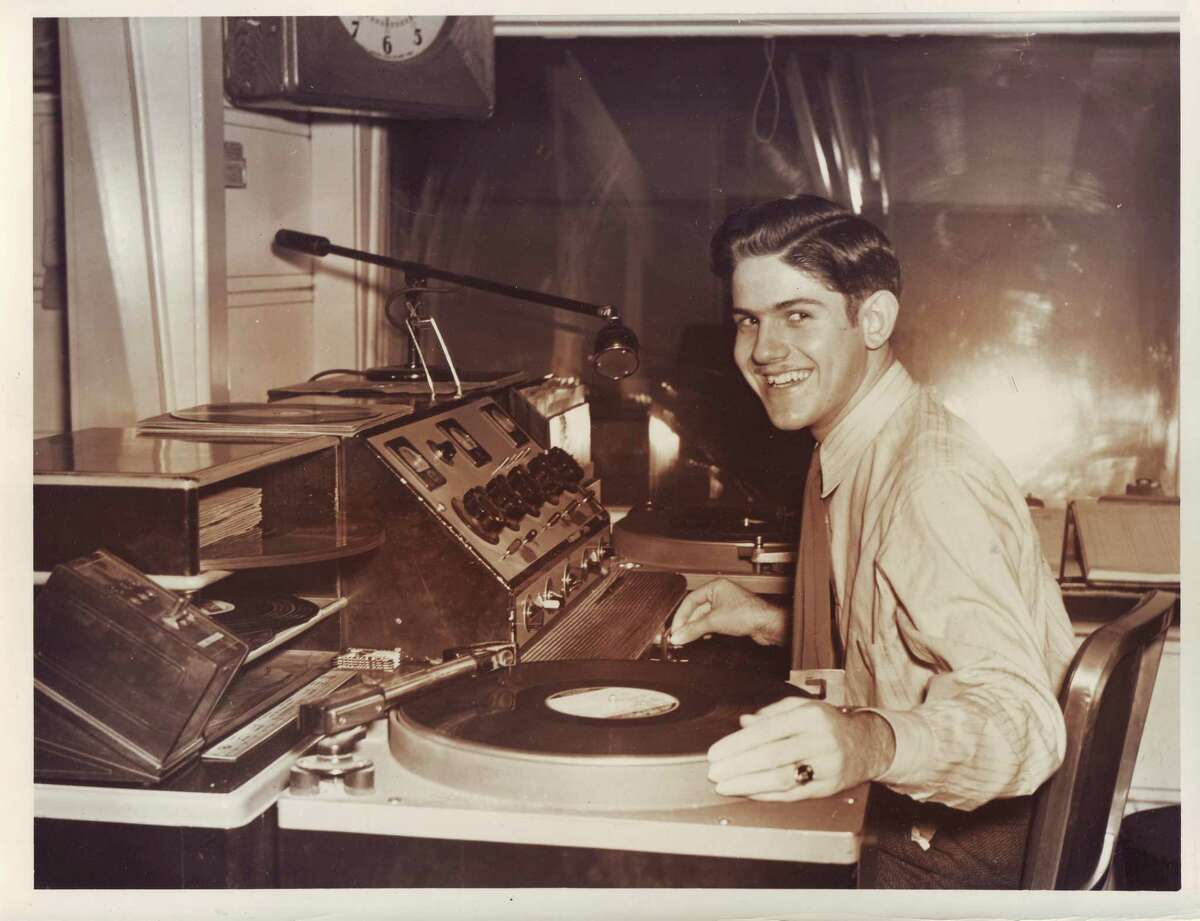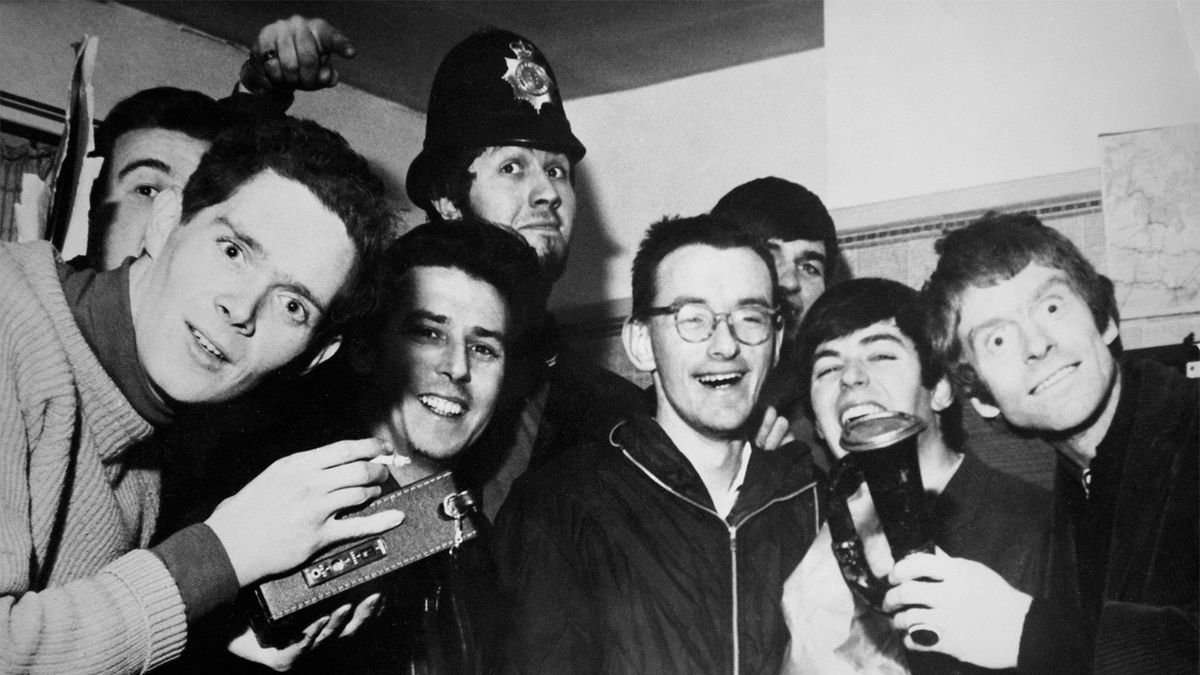Home>Devices & Equipment>Radio>What Radio Stations Play 50s And 60s Music


Radio
What Radio Stations Play 50s And 60s Music
Modified: March 8, 2024
Discover a wide range of radio stations playing the best 50s and 60s music. Tune in and enjoy the nostalgic hits that will transport you back in time.
(Many of the links in this article redirect to a specific reviewed product. Your purchase of these products through affiliate links helps to generate commission for AudioLover.com, at no extra cost. Learn more)
Table of Contents
Introduction
The 50s and 60s were iconic decades in the history of music, with the emergence of various genres that continue to capture the hearts of music enthusiasts today. This pivotal era introduced timeless classics and paved the way for innovation and experimentation in sound. From rock and roll to Motown, these decades gave birth to some of the most influential artists and songs in history.
Radio played a crucial role in the dissemination of music during this time. It provided a platform for artists to reach a wide audience and allowed listeners to discover new tunes. While the music industry has evolved with the advent of digital platforms, there is still a charm in tuning into radio stations that specialize in playing 50s and 60s music.
This article explores the nostalgia and enduring popularity of 50s and 60s music and highlights the top radio stations and online platforms where you can indulge in the sounds of this golden era.
History of 50s and 60s Music
The 50s and 60s marked a time of tremendous growth and innovation in the music industry. This period witnessed the rise of several influential genres that continue to shape popular music today.
In the 1950s, rock and roll emerged as a groundbreaking genre that blended elements of rhythm and blues, country, and gospel music. Artists like Elvis Presley, Chuck Berry, and Little Richard became household names, captivating audiences with their electrifying performances and infectious tunes. The raw energy and rebellious spirit of rock and roll made it a symbol of youth culture and freedom.
Meanwhile, the 60s witnessed a musical revolution. The British Invasion brought a wave of British bands such as The Beatles, The Rolling Stones, and The Who to the forefront of the music scene. These artists not only infused rock and roll with a fresh sound but also pushed the boundaries of songwriting and production.
The 60s also saw the rise of Motown, a record label that played a vital role in promoting African-American artists. Motown produced a string of hits by artists like The Supremes, Marvin Gaye, and Stevie Wonder, offering a soulful sound that resonated with audiences of all backgrounds.
Another notable genre of the era was folk music, which gained popularity through artists like Bob Dylan and Joan Baez. Folk music became a platform for politically and socially conscious songwriting, addressing important issues of the time, such as civil rights and the anti-war movement.
Throughout the 50s and 60s, music became a powerful catalyst for change and self-expression. It reflected the cultural shifts and social movements happening around the world and provided a soundtrack for a generation.
Importance and Impact of 50s and 60s Music
The music of the 50s and 60s left an indelible mark on popular culture and had a profound impact that continues to resonate today. Here are a few reasons why this era remains significant:
1. Cultural Transformation: The music of the 50s and 60s reflected and contributed to a cultural shift. It challenged societal norms and gave a voice to the youth of the time. From the rebelliousness of rock and roll to the socially conscious messages of folk music, these genres became synonymous with the counterculture movement and helped to usher in a new era of individualism and self-expression.
2. Musical Innovation: The 50s and 60s witnessed groundbreaking advancements in music production and technology. Artists pushed the boundaries of what was possible in terms of sound, recording techniques, and studio experimentation. This era saw the rise of stereo sound, multi-track recording, and the incorporation of new instruments and effects, all of which revolutionized the music industry and paved the way for future innovations.
3. Influence on Future Genres: The music of the 50s and 60s laid the foundation for many subsequent genres. Rock and roll inspired countless artists in the decades that followed, shaping the development of genres like punk, alternative rock, and even heavy metal. Motown and soul music had a profound influence on rhythm and blues, funk, and contemporary pop music. The folk movement inspired generations of singer-songwriters who continue to tell stories through their music.
4. Timeless Classics: The 50s and 60s produced an abundance of timeless classics that have stood the test of time. Songs like “Johnny B. Goode” by Chuck Berry, “Hey Jude” by The Beatles, and “Respect” by Aretha Franklin are just a few examples of the enduring impact these decades had on popular music. These songs continue to be celebrated and enjoyed by music fans of all ages, further solidifying their importance.
5. Cultural Preservation: The music of the 50s and 60s preserves a snapshot of the social and cultural climate of that time. It serves as a historical document, capturing the hopes, dreams, struggles, and triumphs of a generation. It allows us to experience the past and understand the significance of these decades in shaping our contemporary world.
The importance and impact of 50s and 60s music cannot be overstated. It continues to inspire, influence, and captivate audiences across generations, making it an integral part of our cultural heritage.
Characteristics of 50s and 60s Music
The music of the 50s and 60s was characterized by its distinct sound and innovative approach. Here are some of the key characteristics that defined the music of this era:
1. Catchy Melodies: One of the defining features of 50s and 60s music was its emphasis on catchy melodies. Whether it was the infectious hooks of rock and roll or the memorable choruses of Motown, these songs had a knack for getting stuck in your head and staying there.
2. Strong Rhythms: The music of this era had a strong rhythmic drive that kept audiences moving and grooving. From the steady backbeat of rock and roll to the infectious dance rhythms of Motown, the music had a pulse that was hard to resist.
3. Rich Harmonies: Many songs of the 50s and 60s featured rich vocal harmonies that added depth and texture to the music. From the tight harmonies of doo-wop to the lush vocal arrangements of bands like The Beach Boys, harmonies played a significant role in enhancing the overall sound.
4. Instrumentation: The instrumentation of 50s and 60s music was often characterized by a combination of traditional and modern instruments. Guitars, pianos, drums, and bass were commonly used, along with the incorporation of brass and string sections in larger ensembles. The electric guitar, in particular, played a pivotal role in the invention of new sounds and styles.
5. Songwriting Craftsmanship: The songwriting craftsmanship of this era was exceptional. Many of the songs from the 50s and 60s followed a verse-chorus structure with memorable hooks and well-crafted lyrics. The ability to tell stories and evoke emotions through their songs was a hallmark of the era’s songwriters.
6. Genre Diversity: The 50s and 60s witnessed the emergence and blending of various genres. Rock and roll, pop, R&B, soul, folk, and psychedelia were just a few of the genres that found popularity during this time. This diversity allowed for experimentation and creativity, contributing to the eclectic nature of the music.
7. Social Commentary: Many songs of the 50s and 60s contained social and political commentary. Artists used their music as a platform to address issues such as civil rights, war, and love. These songs served as anthems for change and reflected the cultural climate of the time.
The characteristics of 50s and 60s music combined to create a rich and diverse sonic landscape. They showcased the talents of the artists and songwriters of the era and continue to be celebrated for their timeless appeal.
Top Radio Stations that Play 50s and 60s Music
If you’re a fan of the nostalgic sounds of the 50s and 60s, there are several radio stations that specialize in playing music from this era. These stations offer a trip down memory lane and allow you to immerse yourself in the timeless melodies and nostalgic vibes of this golden age of music.
Here are some of the top radio stations that play 50s and 60s music:
- Golden Oldies: Known as the go-to station for classic hits, Golden Oldies dedicates a significant portion of its playlist to the music of the 50s and 60s. You can expect to hear iconic tracks from artists like Elvis Presley, The Beatles, and The Supremes, among others. The station’s hosts often provide interesting insights and trivia about the songs and artists, making it an enjoyable listening experience.
- Decades Radio: As the name suggests, Decades Radio celebrates the music from different eras, including the 50s and 60s. The station curates a diverse selection of songs, ranging from rock and roll to Motown and everything in between. Decades Radio also features interviews with artists and special programming that delves into the history and impact of the music from these decades.
- 60s on 6 (SiriusXM): If you’re a SiriusXM subscriber, you won’t want to miss out on 60s on 6. This dedicated channel plays hits from the 60s around the clock, offering a comprehensive selection of music from the era. From The Rolling Stones to The Beach Boys and The Supremes to The Temptations, 60s on 6 has got you covered when it comes to 60s music.
- Classic Oldies: As the name implies, Classic Oldies takes listeners on a journey through the classics, including the hits of the 50s and 60s. This station features an extensive playlist of timeless tunes and welcomes requests from its devoted audience. With a mix of rock and roll, doo-wop, and soul, Classic Oldies delivers a dose of nostalgia every time you tune in.
- Nostalgie: If you happen to be in France, Nostalgie is a popular radio station that plays a wide range of music from the 50s and 60s. With a focus on French and international classics from the era, Nostalgie captures the essence of the time and offers a unique selection of songs that will transport you back in time.
These radio stations are just a few examples of the many options available for indulging in the music of the 50s and 60s. Whether you prefer traditional radio or are a subscriber to streaming platforms, these stations provide a window into the past and allow you to relive the magic of the era through its unforgettable music.
Online Platforms for Streaming 50s and 60s Music
If you’re looking to stream 50s and 60s music online, there are several platforms that offer a vast collection of songs from this iconic era. These platforms provide convenient access to a wide range of artists and genres, allowing you to enjoy the music of the 50s and 60s whenever and wherever you want.
Here are some of the top online platforms for streaming 50s and 60s music:
- Spotify: With its extensive music library, Spotify is a go-to choice for streaming music from any era, including the 50s and 60s. The platform offers curated playlists dedicated to specific decades or genres, making it easy to find and discover classic hits from this era. You can explore playlists like “Best of the 50s” or “60s Classics” to dive into the music that defined these decades.
- Apple Music: Apple Music is another popular streaming platform that provides access to a vast collection of music. It offers a variety of curated playlists and radio stations that feature 50s and 60s music. From the “Essentials” series that highlights the essential songs of a particular artist to the “Hits from the 60s” playlist, Apple Music offers a well-rounded selection of songs from this era.
- Pandora: Pandora is known for its personalized radio stations, and it’s an excellent choice for streaming 50s and 60s music. You can create a station based on a specific artist or song from this era, and Pandora will curate a playlist featuring similar tracks. It’s an excellent way to discover new songs and artists while enjoying the classics.
- YouTube Music: YouTube Music provides a wide array of music videos, live performances, and official audio tracks from the 50s and 60s. You can search for specific songs, artists, or genres to find a plethora of content from this era. YouTube Music’s recommendations and playlists offer a personalized listening experience, tailored to your preferences.
- Amazon Music: Amazon Music offers a vast selection of music, including a dedicated section for 50s and 60s music. You can explore their “Oldies” category to find classics from this era, as well as curated playlists like “Best of the 50s” or “60s Gold.” The platform also offers an ad-supported version for those who prefer free streaming with occasional ads.
These online platforms provide a convenient and accessible way to stream 50s and 60s music. Whether you prefer creating playlists, exploring curated content, or discovering new songs, these platforms have something for every fan of this golden era. So sit back, relax, and enjoy the timeless sounds of the 50s and 60s at your fingertips.
Nostalgia and the Appeal of 50s and 60s Music
There is a timeless allure to the music of the 50s and 60s that continues to captivate audiences today. This era holds a special place in the hearts of many, evoking a sense of nostalgia and sentimental longing for a bygone era. Here are some reasons why the music of the 50s and 60s holds such enduring appeal:
1. Cultural Significance: The music of the 50s and 60s represents a significant cultural shift. It was a time of social change and rebellion, with artists pushing boundaries and challenging the status quo through their music. The songs from this era became anthems for a generation, mirroring their hopes, dreams, and struggles. The music resonated with people who lived through those times and continues to resonate with new generations who appreciate its historical and cultural significance.
2. Timeless Melodies: The melodies of the 50s and 60s were crafted with exceptional skill, resulting in songs that have stood the test of time. These melodies are inherently catchy and memorable, often making use of simple yet powerful chord progressions. From the infectious rock and roll tunes to the lush harmonies of Motown, the music of this era possesses a unique charm and an ability to transport listeners to a different time and place.
3. Emotional Connection: The music of the 50s and 60s carries an emotional depth that resonates with listeners on a personal level. Whether it’s the sentimental ballads or the upbeat dance numbers, these songs evoke a range of emotions, from joy and excitement to nostalgia and longing. They often serve as a soundtrack to significant life moments, provoking memories and creating an emotional connection that transcends time.
4. Musical Craftsmanship: The music of the 50s and 60s was the product of exceptional musical craftsmanship. From the intricate harmonies and precise instrumentations to the meticulous songwriting, this era saw artists and musicians honing their skills to create memorable and enduring tracks. The quality and attention to detail in the production and arrangement of the music added to its appeal and timelessness.
5. Cross-Generational Appeal: The music of the 50s and 60s has enjoyed cross-generational appeal, captivating listeners of all ages. Older generations who grew up with this music find comfort and nostalgia in its familiar tunes, while younger generations discover its timeless appeal and appreciate its influence on modern music. This cross-generational appeal has allowed the music of this era to transcend time and maintain its popularity.
The nostalgia and appeal of 50s and 60s music lie in its cultural significance, timeless melodies, emotional connection, musical craftsmanship, and cross-generational appeal. As the years pass, the music of this era continues to enchant and inspire, reminding us of the enduring power of great music and its ability to connect us to the past.
Conclusion
The music of the 50s and 60s holds a special place in the hearts of music enthusiasts around the world. It represents a golden era of creativity, cultural transformation, and timeless melodies that continue to resonate with audiences to this day. The impact and influence of this era are undeniable, shaping the landscape of popular music and leaving a lasting legacy.
From the emergence of rock and roll to the soulful sounds of Motown, the music of the 50s and 60s showcased exceptional talent, boundless creativity, and a spirit of rebellion. It provided a platform for artists to express themselves and connect with audiences on a deep emotional level. The catchy melodies, rich harmonies, and thought-provoking lyrics became the soundtrack of generations and continue to evoke nostalgia and spark joy in listeners across the globe.
Radio played a vital role in the dissemination of this music, providing a platform for artists to reach a broad audience and allowing listeners to discover new sounds and styles. While digital platforms have revolutionized the way we consume music, there is still a unique charm in tuning into radio stations that specialize in playing 50s and 60s music, as well as streaming platforms that offer a vast collection of songs from this era.
The importance and impact of 50s and 60s music are undeniable. Its cultural significance, timeless melodies, emotional connection, musical craftsmanship, and cross-generational appeal continue to captivate and inspire. Whether you were alive during this era or you discovered the music later in life, the nostalgia and allure of the music from the 50s and 60s transport us to a simpler time and provide a sense of comfort and joy.
So, whether you find yourself jamming to the Beatles, swaying to Motown classics, or rocking out to timeless hits, the music of the 50s and 60s will always hold a special place in our hearts and remind us of the power of music to transcend time and create enduring memories.











